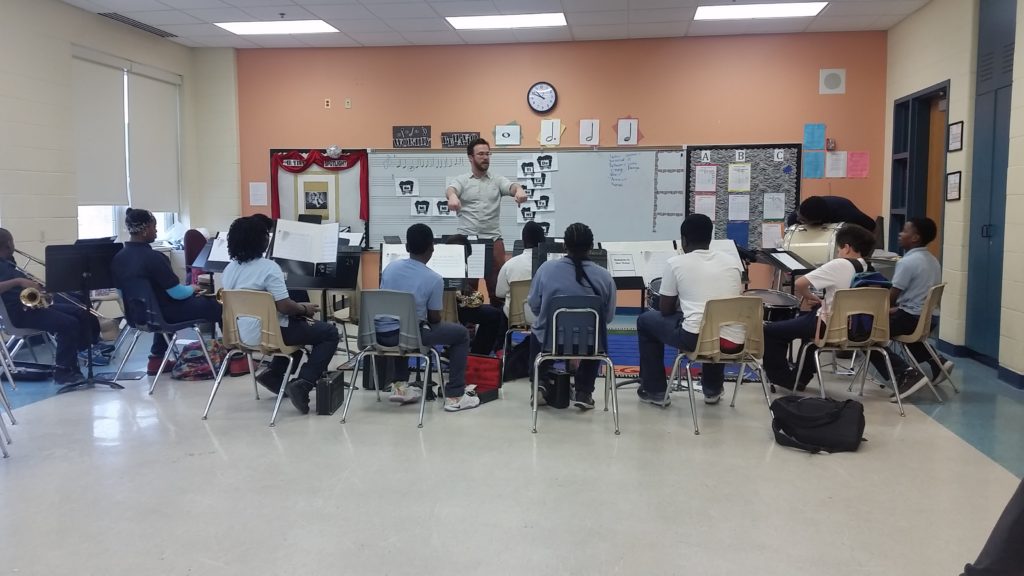Why DMDL? The Arts With Intention.
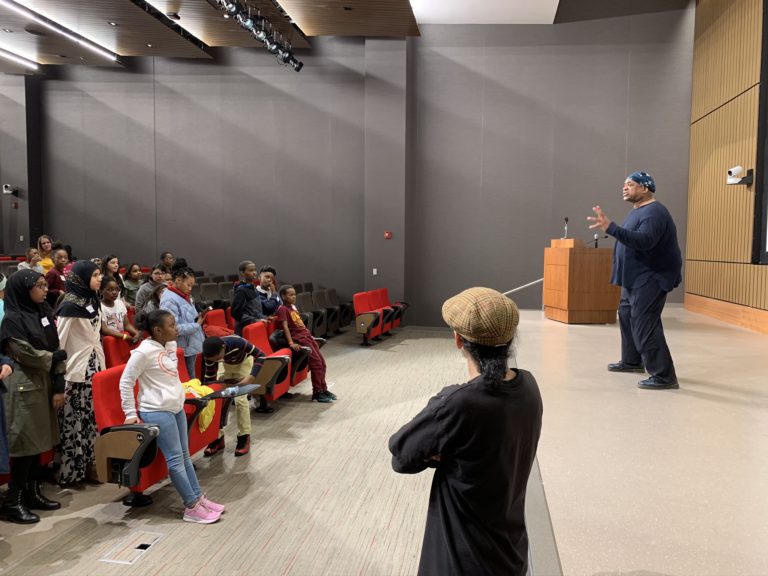
Not all arts programs are created equal. At DMDL, we don’t just bring in performances — we build purposeful, student-centered experiences that connect directly to how students learn and grow.
- Our Programs & Services
- Fine Arts Programs
In-School Performances
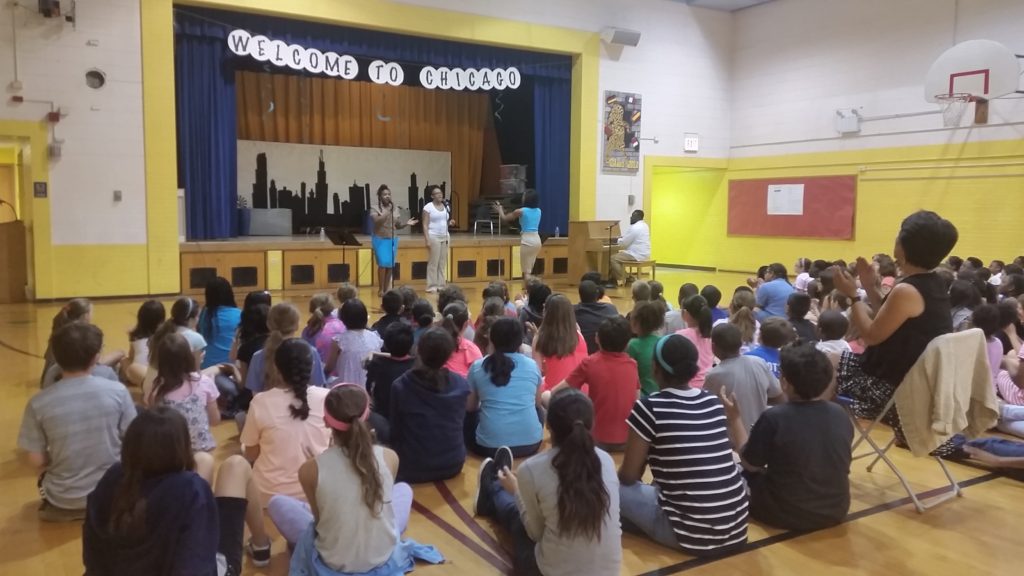
We bring the highest level of arts programming to your school with enriched presentations that connect cultures and historical perspectives.
American culture can be defined by its music. We can better understand today’s music culture by looking through the mirror of time. Presented by a 4-5 piece band (guitar, bass, drums, keyboard, and vocals), this presentation explores the development of American Rock music from the early jazz crooners and the American blues storytellers to the bands of the “British Invasion.”

Did you know there are actually only 12 musical notes in music? Discover the power these 12 notes in the hands of genius composers. This presentation crosses boundaries of genre, style and geography.
See how they show up in culture and history when genius is applied in this presentation of music from Bach, Mozart, Duke Ellington, and Stevie Wonder. Steered by a string quartet playing 21st century musical concepts we’ll explore Europe and America down the avenues of Classical, Swing, and Motown.

America’s uniqueness stems from the many cultures that are woven together in our streets and neighborhoods. Explore the different music in our cultures that have immigrated and now call America “home.” This presentation seeks to bring the focus on understanding how cultures differ and are similar, based on the music and personal stories of its musicians.
Music and song is fundamental to the human experience and expression. It connects us to culture, ancestry, and traditions. We are all part of a musical tradition and therefore, all have a story to share and to express. Jazz vocalist, Ricardo Jimenez, will express some of these stories through this presentation, including some references to other genres of music.
Feel the beat come alive in this exciting live drumline experience! Students will discover how rhythm, coordination, and teamwork create powerful music as they watch and participate alongside professional percussionists. Through dynamic demonstrations and interactive moments, students will explore the energy and tradition behind drumline performance while building a deeper appreciation for percussion arts.

From DuSable to Obama: Chicago’s Black Metropolis is a powerful multimedia performance based on the WTTW documentary of the same name, featuring an original score by Emmy Award-winning composer Orbert Davis. Through music, narrative, and visual excerpts, this presentation traces the vibrant arc of Chicago’s African-American history – from the city’s Haitian-born founder Jean Baptiste Pointe du Sable to the historic election of President Barack Obama.
Students will journey through the cultural and political evolution of Black Chicago, guided by a live ensemble that blends jazz, gospel, blues, swing, and spoken work. This performance is more than a history lesson – it’s a celebration of resilience, creativity, and the enduring legacy of community leadership and cultural expression.
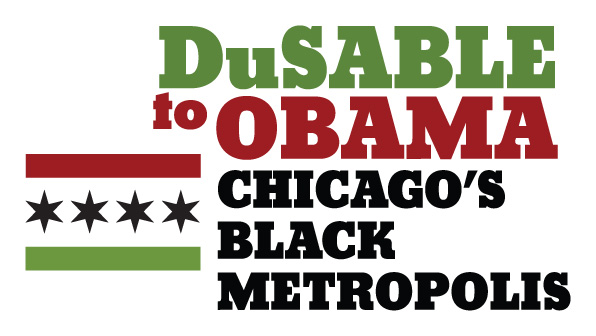
Students will delve into the connections that jazz and our American pillars of democracy, liberty, and freedom share. They will also explore how jazz influenced American and world cultures and how it continues to do so to this day.

Students will explore and learn about the multi-faceted art of dance in the first of this 2-part series. Topics covered in this residency pertain to dance in America and range from ballet through tap.
A musical learning workshop. Click here for more.

Students will learn about the rich history of Latin America through its music and the complex rhythms and uniquely percussive instruments.

The Chicago Jazz Philharmonic pays homage to the First Lady of Song, Ella Fitzgerald, in honor of what would have been her 95th birthday. The program included CJP’s full orchestra (55 pieces) and featured four of Chicago’s most celebrated vocalists, Dee Alexander, Jackie Allen, Bobbi Wilsyn, and Joan Collaso, giving tribute to the legacy that is Ella Fitzgerald.

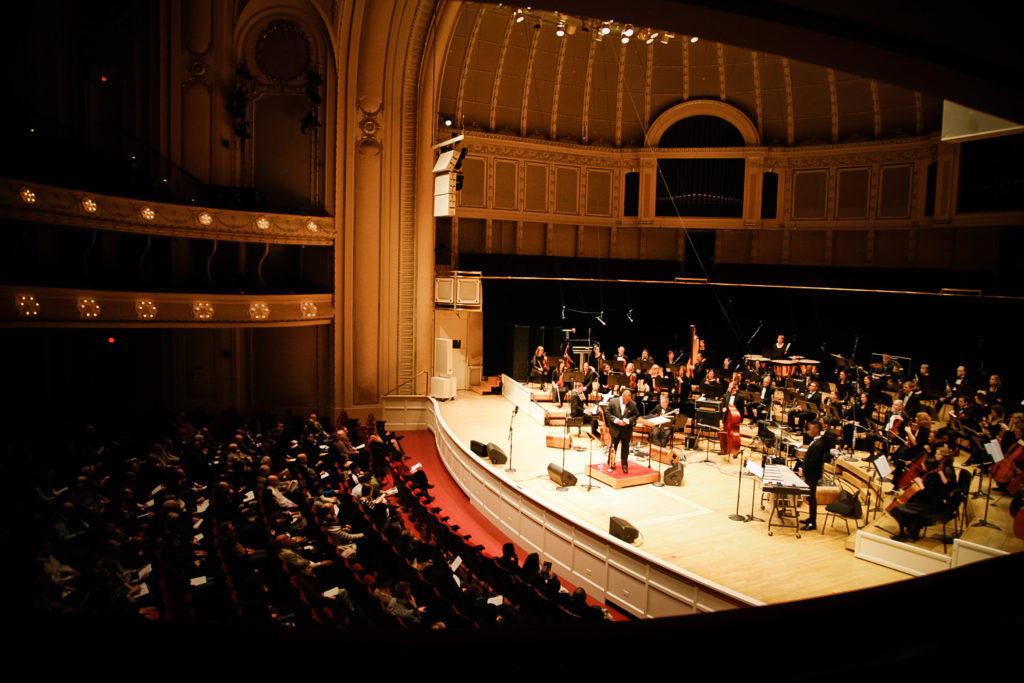
Field Trip Performances
We invite your students to take an excursion to experience large-scale performances at world-class venues.
America’s uniqueness stems from the many cultures that are woven together in our streets and neighborhoods. Explore the different music in our cultures that have immigrated and now call America ‘home.’ This presentation seeks to bring the focus on understanding how cultures differ and are similar, based on the music and personal stories of its musicians.

Honoring Nelson Mandela’s centennial year, Chicago Jazz Philharmonic reprises this monumental work which premiered in 2008 as part of a worldwide celebration of Mandela’s 90th birthday. The composition weaves jazz and classical music with African rhythms and narration from Mandela’s speeches.


DuSable to Obama: Chicago’s Black Metropolis tells the history of Chicago’s African-American community as never before, through the voices of its leading citizens, scholars, artists, politicians, and business leaders.

Repertoire included works that demonstrated how the jazz and classical genres can indeed fuse, creating a new aesthetic; works by Bill Russo, David Baker, Gunther Schuller, Daniel Schnieder and of course Orbert Davis.

Artist in Residency
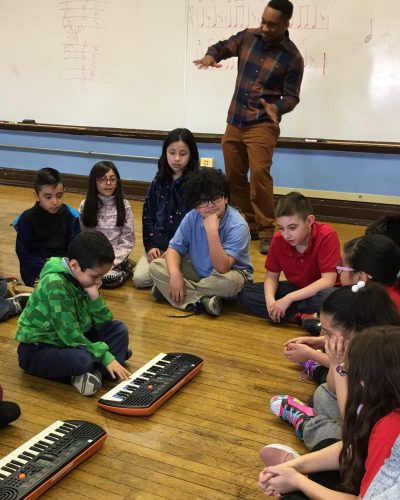
We give the students the opportunity to discover the arts on a deeper level through multi-week experiences.
Discover the physical and social benefits of dance in this presentation. With a combination of Tap and Hip Hop dance artists experience cultural dances in the U.S. as they present dance techniques within various genres and explore how the feet play an integral part (line dancing, Irish jigs, tap, and fancy footwork). Learn some dance moves and show us what you’ve got!

Using basic themes of communication, leadership and community, Diaspora! will lead students on a journey from the coasts of Africa to the in-lands of America. Students will learn about the aesthetics of work and the principles of survival as they are presented in the American slavery experience. Methods of communication and story telling are explored through the oral traditions of “signifying”, “pattin’ juba” and “urban street jive”, traits which are present in the rituals of African tribal life and modern day rap that survived the African Diaspora.

DuSable to Obama: Chicago’s Black Metropolis tells the history of Chicago’s African-American community as never before, through the voices of its leading citizens, scholars, artists, politicians, and business leaders.

In this presentation, the DJ will discuss the Evolution of Hip Hop and its influences on American culture. Students will learn the influences of Hip Hop on the DJ and it has changed from inception to the 21st Century. Presenter will also discuss “having a career as a Mixologist.” Through live demonstrations, participants will interact with presenter on the use of new DJ technologies and techniques.

Students will delve into the connections that jazz and our American pillars of democracy, liberty, and freedom share. They will also explore how jazz influenced American and world cultures and how it continues to do so to this day.

Students will look at the life of Soul and R&B music, considering histories and exploring music examples that will add to their understanding of music as it is today.

Learning how to photograph and edit with a smart phone or tablet.

In this Part 1 of Jazz History, students will learn about the origins of jazz from its roots in African music and culture through its transformation during the African Diaspora.

Students will gain knowledge of a genre of jazz known as Third Stream. They will learn about how jazz and classical come together to form a unique genre, experience first-hand music from our Chicago Jazz Philharmonic, and draw understanding about what the meaning of Third Stream is and how it relates to our world.

Gain insight and understanding when you explore the development of the American culture with contributions from the drummers, dancers, and storytellers of Africa. Discover the art of African music and cultures through African eyes and ears. Experience West African instruments and how the practice of incorporating improvisation, polyrhythms, and dance helped influence world cultures.

America’s uniqueness stems from the many cultures that are woven together in our streets and neighborhoods. Explore the different music in our cultures that have immigrated and now call America ‘home.’ This presentation seeks to bring the focus on understanding how cultures differ and are similar, based on the music and personal stories of its musicians.

Technique, Team building and Communication through the percussive arts.

Students will gain an understanding of music by exploring its history and analyzing various music examples that illustrate its journey through time. Through these students will benefit from cognitive and emotional growth experiences of classical music study.

Honoring Nelson Mandela’s centennial year, Chicago Jazz Philharmonic reprises this monumental work which premiered in 2008 as part of a worldwide celebration of Mandela’s 90th birthday. The composition weaves jazz and classical music with African rhythms and narration from Mandela’s speeches.

Examine why Mariachi and Mexican Folk Music play a major role in Mexican culture by learning about its purposes and uses in life and get to know the instruments and costumes that make up this traditional folk music.

Students will learn about the rich history of Latin America through its music and the complex rhythms and uniquely percussive instruments.

In this Part 2 of Jazz History, students will continue add to their understanding of jazz history by exploring the evolution jazz has taken throughout American history.

